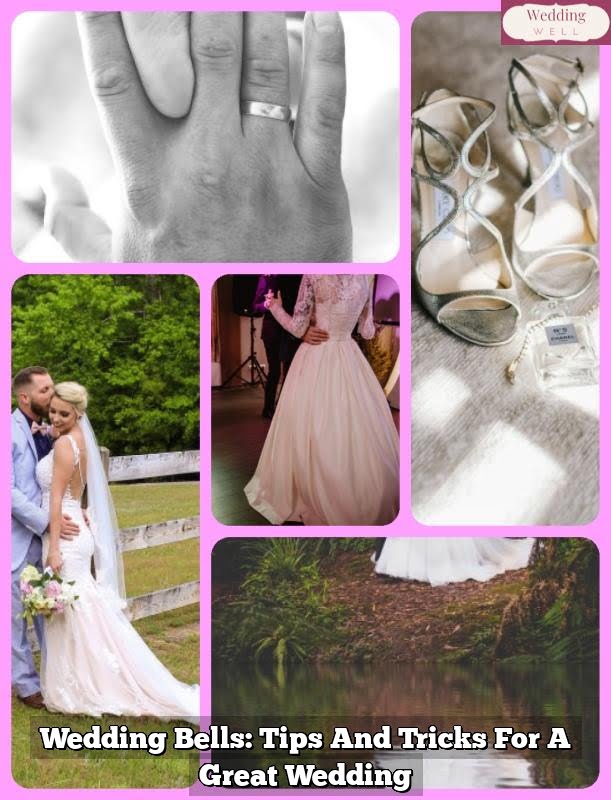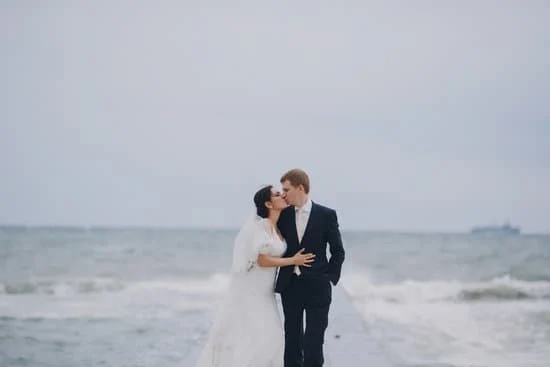Every bride dreams of walking down the aisle to the melodious notes of a wedding march, a timeless tradition that adds an air of elegance and romance to the ceremony. The wedding march has become synonymous with the grand entrance of the bride, setting the tone for this special moment in every wedding ceremony.
Throughout history, wedding marches have been an integral part of matrimonial celebrations, each with its own unique significance and cultural variations. From classical compositions to modern interpretations, the wedding march continues to hold a cherished place in the hearts of couples embarking on their journey into marriage.
One of the most famous wedding marches ever composed is known for its majestic and grandiose composition, creating an aura of reverence and celebration as the bride takes her first steps towards her future. This iconic piece is universally recognized as a symbol of love and commitment, and its mesmerizing melody has graced countless weddings around the world.
History of Wedding Marches
The tradition of using music to accompany weddings dates back centuries, with the use of wedding marches tracing as far back as the Renaissance era. In fact, the concept of walking down the aisle to music has been a long-standing tradition across various cultures and religions.
The use of wedding marches became particularly popular in Western cultures during the 19th century. This was a time when composers began to create specific pieces of music for bridal processions and recessionals, which added a touch of romance and grandeur to the wedding ceremony. One composer, in particular, made a significant contribution to this tradition, by composing what is now known as the most famous wedding march in history.
The famous Wedding March that is most commonly associated with weddings today was composed by Felix Mendelssohn, a German composer who wrote music across various genres. The piece is part of his larger work called “A Midsummer Night’s Dream,” which was composed in 1842. The Wedding March quickly gained popularity and became a staple at weddings around the world, making it an iconic piece of music for couples walking down the aisle.
The Famous Wedding March
This beloved piece of music has a rich history dating back to the 19th century. Composed by Felix Mendelssohn in 1842 as part of his incidental music for William Shakespeare’s play “A Midsummer Night’s Dream,” the Wedding March quickly gained popularity as a top choice for wedding ceremonies. The grandeur and uplifting nature of the composition make it a perfect fit for such a momentous occasion.
Though it was initially written for a stage production, Mendelssohn’s Wedding March became widely associated with weddings and has since become one of the most popular pieces of music utilized during this special event. Its timeless elegance and undeniable emotional impact have solidified its place as an essential component of any wedding ceremony that emphasizes tradition and romance.
Mendelssohn’s masterpiece continues to be cherished by couples worldwide who are planning their weddings, making their way down the aisle to begin a new chapter in their lives. The legacy of this iconic piece stands as a testament to its enduring significance in wedding ceremonies across different cultures and traditions.
The Composer Behind the Wedding March
The famous Wedding March is a musical piece that has become synonymous with weddings around the world. It is played during the processional, as the bride walks down the aisle towards her soon-to-be spouse. This traditional piece of music adds an air of elegance and grandeur to any wedding ceremony, making it a beloved choice for couples tying the knot.
The Wedding March was composed by Felix Mendelssohn in 1842 as a part of his incidental music for Shakespeare’s play, A Midsummer Night’s Dream. The piece was not originally intended for weddings, but it quickly gained popularity as a processional for brides after it was first used in a royal wedding in 1858. Since then, Mendelssohn’s Wedding March has become a timeless classic that is still widely used in weddings to this day.
Mendelssohn’s Wedding March is a beautiful and uplifting piece of music that perfectly captures the joy and celebration of a wedding ceremony. Its triumphant melody and majestic tempo create an atmosphere of excitement and anticipation as the bride makes her entrance. The composer’s masterful use of orchestration and harmonies has cemented the Wedding March as an iconic piece of music, which continues to be cherished by couples all over the world on their special day.
The Role of the Wedding March in Modern Weddings
The wedding march has long been a beloved tradition in weddings, symbolizing the transition of the bride from her old life to her new life with her partner. In modern weddings, the role of the wedding march has evolved to become a significant part of the ceremony, adding an extra touch of romance and elegance to the occasion.
In today’s modern weddings, the wedding march still holds an important place in the processional, setting the tone for the entrance of the bride. Many couples carefully select their choice of music for this iconic moment, ranging from traditional classical pieces to modern love songs that hold special meaning for them.
The wedding march serves not only as a signal for the start of the bridal procession but also as a meaningful and sentimental element that contributes to the overall atmosphere of the ceremony.
In contemporary weddings, couples have taken creative liberties with how they incorporate the wedding march into their special day. Some opt for live musical performances, such as string quartets or harpists, for a more personalized and intimate ambiance. Others choose to include variations of classic wedding marches or even create their own unique rendition to reflect their individuality as a couple. This allows for a more personalized and memorable experience that truly represents the couple’s love story.
Variations of the Wedding March
Traditional Wedding March Variations
The traditional wedding march is often associated with grandeur and formality, making it the perfect choice for classical or formal weddings. However, there are also variations of the traditional wedding march that cater to different themes or personal preferences.
Some couples opt for a slower or more subdued version of the wedding march to create a more intimate atmosphere, while others choose to incorporate cultural elements into the music to reflect their heritage. Regardless of the variation chosen, the wedding march remains an iconic and meaningful part of the ceremony.
Modern Twists on the Wedding March
In recent years, modern couples have been embracing non-traditional variations of the wedding march to inject their personalities into their ceremony. This can include choosing popular songs from contemporary artists that hold sentimental value for the couple or selecting instrumental versions of modern hits.
Some couples even opt for live music played by a band or DJ to create a unique and personalized experience for themselves and their guests. These modern twists on the wedding march showcase how this timeless tradition continues to evolve and adapt to changing times.
Customized Wedding Marches
For some couples, having a customized wedding march composed specifically for their big day is the ultimate way to infuse their love story into their ceremony. By working with a talented composer or musician, couples can create a one-of-a-kind piece that perfectly captures their personalities and love story.
This personalized approach ensures that every step down the aisle is filled with music that holds deep significance for the couple, creating an unforgettable moment that will be cherished forever.
Overall, these variations showcase how versatile and meaningful the wedding march can be in reflecting each couple’s unique journey towards marriage.
Notable Weddings Featuring the Famous Wedding March
Royal Weddings
Many notable royal weddings have featured the famous wedding march, including the wedding of Prince William and Kate Middleton in 2011. As Kate made her way down the aisle of Westminster Abbey, the iconic melody filled the grand space, adding an air of elegance and tradition to the ceremony. Similarly, when Prince Harry married Meghan Markle in 2018, the beautiful strains of the wedding march accompanied her regal entrance at St. George’s Chapel.
Celebrity Weddings
In addition to royal weddings, many celebrity couples have also chosen to incorporate the famous wedding march into their nuptials. One particularly memorable example is when Kim Kardashian wed Kanye West in a lavish ceremony in Florence, Italy. As Kim walked towards her future husband, the familiar notes of the wedding march underscored the grandeur of their union.
Historical Weddings
Throughout history, there have been numerous historical weddings that have featured the famous wedding march. One such example is Jacqueline Kennedy’s marriage to Aristotle Onassis aboard his private Greek island, where she was escorted by her son as she gracefully proceeded to marry for a second time.
These are just a few examples of notable weddings that have incorporated this timeless and iconic piece of music into their ceremonies. The universal appeal and enduring popularity of the famous wedding march continue to make it a staple at weddings around the world.
Conclusion
In conclusion, the wedding march has become an iconic and timeless element of wedding ceremonies around the world. Its history dates back centuries, and it has evolved over time to become a symbol of love, tradition, and elegance. The famous wedding march, which is commonly used for the processional, holds a special place in the hearts of many couples as they take their first steps down the aisle towards a new chapter in their lives.
As we have explored, the wedding march has been composed by Felix Mendelssohn and is from his incidental music to A Midsummer Night’s Dream. This romantic and uplifting melody has been etched into the minds of countless individuals as a representation of matrimonial bliss. It is truly remarkable how Mendelssohn’s composition has stood the test of time, continuing to be an integral part of weddings all over the world.
Furthermore, despite changing trends in wedding ceremonies, the wedding march remains a steadfast tradition. Whether it is played on traditional organ or reimagined with modern instrumentation, its significance endures. As such, it is clear that this timeless piece of music will continue to accompany countless brides and grooms as they make their way towards their happily ever after.
Frequently Asked Questions
Who Wrote the Wedding March?
The Wedding March was composed by Felix Mendelssohn in 1842 as a part of his incidental music for A Midsummer Night’s Dream. It has since become a popular choice for wedding ceremonies.
Who Wrote the Now Famous Wedding March?
The famous Wedding March was written by Felix Mendelssohn, a German composer known for his romantic-era music. The piece was originally intended for the play A Midsummer Night’s Dream.
What Is the Famous Wedding Song Called?
The famous wedding song is called “Wedding March.” It is associated with the entrance or exit of the bride and groom during a wedding ceremony and is widely recognized as a traditional and joyful piece of music for this special occasion.

Welcome to my blog about home and family. This blog is a place where I will share my thoughts, ideas, and experiences related to these important topics. I am a stay-at-home mom with two young children. I hope you enjoy reading it! and may find some helpful tips and ideas that will make your home and family life even better!





